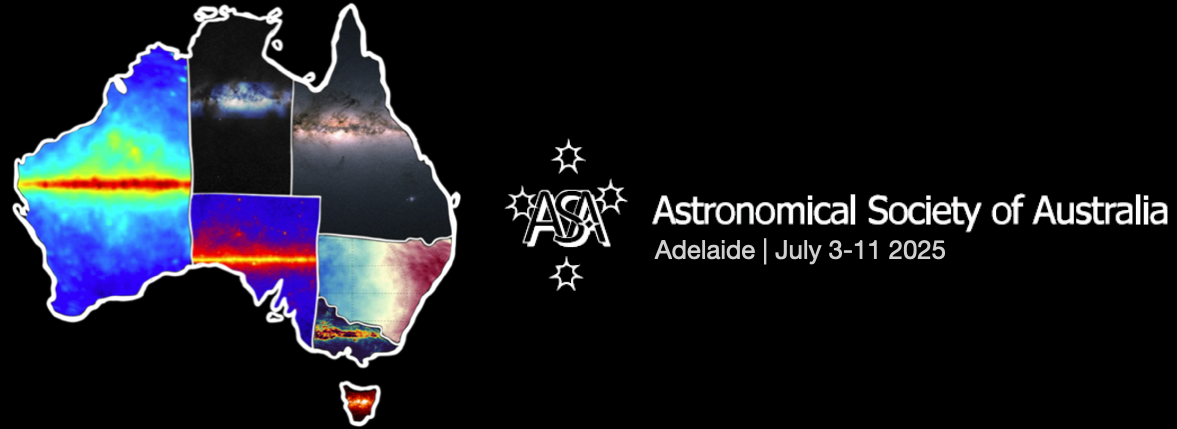Speaker
Description
The stellar populations and their distributions in and around galaxies record the evolutionary history of a galaxy. The gas from which stars form may have experienced dilution from pristine gas or enrichment from previous generations of stars. Alternatively, enriched gas may escape through stellar winds or AGN feedback in a shallow potential well. The structure and depth of the local gravitational potential are thus thought to play a crucial role in a galaxy's ability to retain gas and continue to form stars. Signatures of these processes may therefore be reflected in the spatial distribution of the stellar population parameters (ages, metallicities, and alpha-element abundances).
In my poster, I will present how stellar population gradients vary with global galaxy structure parameters (such as Sérsic index, effective radius, visual morphology, etc.) in MAGPI (z = 0.3) galaxies. I will also present the impact of the local gravitational potential (probed via the enclosed dynamics and galactocentric distance) and local angular momentum (local jₛ and/or λ) on local stellar populations.
To determine the stellar population radial metallicity and alpha-abundance gradients, I have radially binned the MAGPI galaxies and employed pPXF (Cappellari et al. 2023) to fit the stellar continuum and thus obtain metallicity and alpha-abundance values across different radial bins. Following this, I calculated the slopes of these gradients and analysed the correlations with structural parameters such as Sérsic index, size, and visual morphology.

